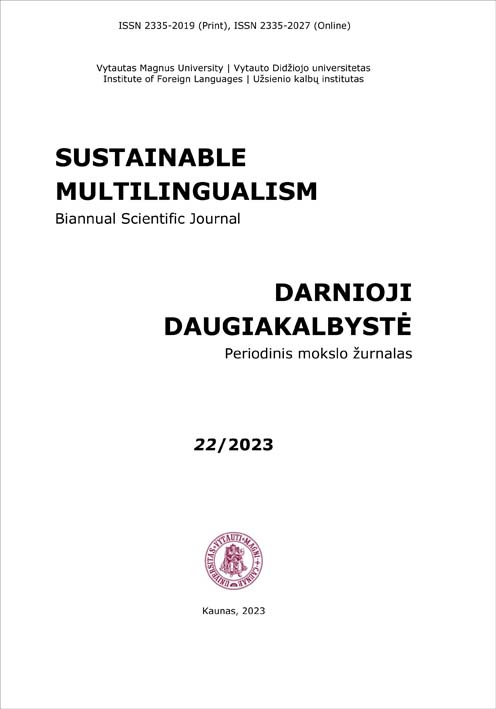Daugiakalbiai filmai: turinio perteikimas Lietuvos kurtiems žiūrovams
Multiligual Films: Rendering Multilingual Narrative for Deaf Viewers in Lithuania
Author(s): Jurgita KerevičienėSubject(s): Language studies, Health and medicine and law, Film / Cinema / Cinematography, Translation Studies
Published by: Vytauto Didžiojo Universitetas
Keywords: Audiovisual translation; Multilingualism; Subtitling; Subtitling for the deaf and hard of hearing (SDH);
Summary/Abstract: The issue of multilingualism often arises in the context of audiovisual translation, when dubbing, subtitling or voice-over is under discussion. This aspect also does not lose its significance in subtitling multilingual films for the deaf and hard of hearing. By applying this mode, the content of audiovisual product is conveyed to the deaf by employing a special instrument of audiovisual translation, namely, specialized subtitles (SDH). In this case, subtitles must include not only a translated dialogue text; the additional information that helps the deaf perceive the off screen non-verbal and verbal cues, understand the narrative and mood of the film and estimate roles of foreign languages must be added as well. The paper aims at exploring strategies for conveying multilingualism to the deaf in the films created by Lithuanian filmmakers. Three Lithuanian multilingual films “Back to Your Arms“ (2010, directed by K. Vildžiūnas), „How We Played the Revolution“ (2011, directed by G. Žickytė) and „Miracle“ (2017, directed by E. Vertelytė) as the research material were selected for the analysis. In the theoretical part, strategies of application of multilingual films suggested by foreign scholars (De Higes-Andino et al., 2013, 2014, Szarkowska & Żbikowska & Krejtz, 2013, 2014) are outlined; insights into multilingualism presented by Lithuanian researchers are reviewed and practical principles that help reveal multilingualism for the deaf audience in Lithuanian films are examined. A descriptive-analytical approach is employed to analyze the rendition of multilingualism to the target audience; whereas, to reveal needs of the Lithuanian deaf the analysis of achieved quantitative data is made. The study has revealed that the process of conveying multilingualism to the deaf viewers in Lithuanian films is a process that requires creativity. Moreover, the results of the analysis suggested that in the analyzed Lithuanian films a multilingual source text was only translated and subtitled by applying a standard subtitling format. With regard to the multilingualism rendering for the deaf, it can been noted that standard subtitles only partially revealed the content of the film; though, the information and aspects about multilingualism as such still remained inaccessible. For this reason, special subtitles (SDH) for the hearing impaired viewers should be prepared; however, this type of subtitles has stayed uncommon for the Lithuanian filmmakers.
Journal: Darnioji daugiakalbystė
- Issue Year: 2023
- Issue No: 22
- Page Range: 184-211
- Page Count: 28
- Language: Lithuanian

